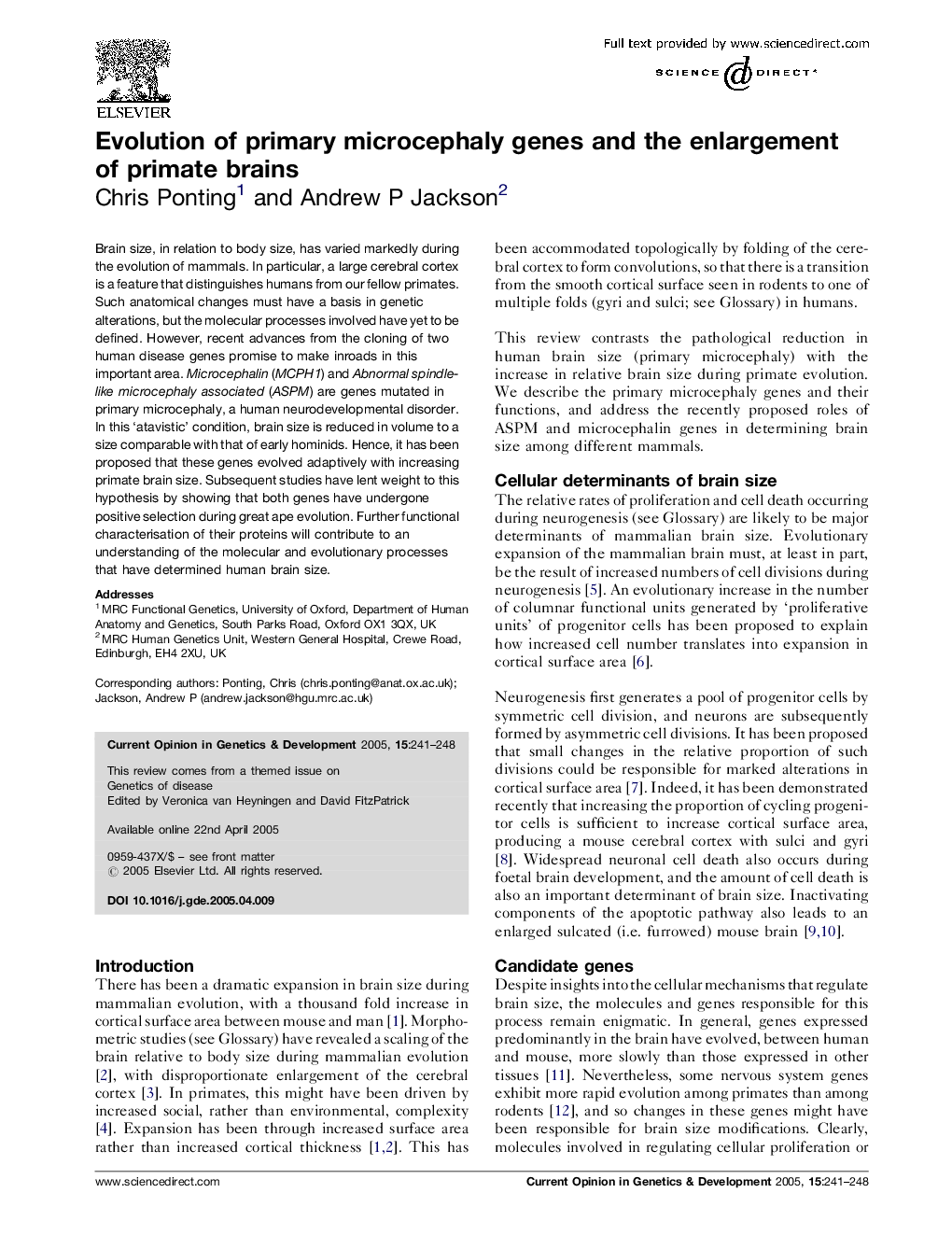| Article ID | Journal | Published Year | Pages | File Type |
|---|---|---|---|---|
| 9107561 | Current Opinion in Genetics & Development | 2005 | 8 Pages |
Abstract
Brain size, in relation to body size, has varied markedly during the evolution of mammals. In particular, a large cerebral cortex is a feature that distinguishes humans from our fellow primates. Such anatomical changes must have a basis in genetic alterations, but the molecular processes involved have yet to be defined. However, recent advances from the cloning of two human disease genes promise to make inroads in this important area. Microcephalin (MCPH1) and Abnormal spindle-like microcephaly associated (ASPM) are genes mutated in primary microcephaly, a human neurodevelopmental disorder. In this 'atavistic' condition, brain size is reduced in volume to a size comparable with that of early hominids. Hence, it has been proposed that these genes evolved adaptively with increasing primate brain size. Subsequent studies have lent weight to this hypothesis by showing that both genes have undergone positive selection during great ape evolution. Further functional characterisation of their proteins will contribute to an understanding of the molecular and evolutionary processes that have determined human brain size.
Related Topics
Life Sciences
Biochemistry, Genetics and Molecular Biology
Developmental Biology
Authors
Chris Ponting, Andrew P Jackson,
